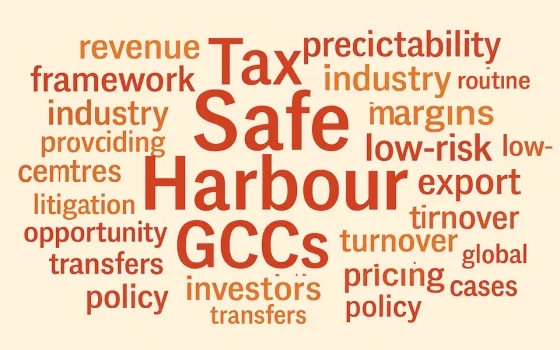At the end of September, the Ministry of Electronics and Information Technology (MEITY) released a notification that made the Information Technology Act of 2000 (IT Act) applicable to several new documents and transactions (see here). Through one half-page notification, MEITY has opened the doors for several new opportunities for digitization and innovation in the financial and real estate sectors. We discuss this below.
What has changed?
To recap, the IT Act enables private and government entities to use digital documentation or do transactions online. It is because of this Act that we can, for example, enter a contract to buy software online, or fill out the paperwork to open a new bank account online, or make filings to income tax authorities or the Ministry of Corporate Affairs using digital signatures.
However, there are some documents and transactions which cannot be done digitally using the IT Act’s enabling provisions (listed in Schedule I of the Act). These exclusions have been so far seen to be high-risk, and, for them, parties must use paper records. So, for example, if a law requires these to be ‘in writing’, to be signed, or filed to a government authority, parties can only meet these requirements using paper records and traditional ‘ink’ signatures.
The new notification makes the list of exclusions much smaller. We explain this below in detail in Appendix 1. In effect, the following documents & transactions – that earlier had to be done physically – can now also be done digitally:
- Demand promissory notes (DPNs) issued in favour of, or endorsed by, banks, housing finance companies, insurers, stock exchanges, stockbrokers, merchant bankers, credit rating agencies, pension funds, and other regulated entities in the financial sectors (financial sector participants).
- Bills of exchange issued in favour of, or endorsed by, such financial sector participants.
- Powers of attorney (POAs) that empower such financial sector participants to act for, on behalf of, and in the name of the person executing such POAs.
- Any contracts of sale or transfers of any immovable property, or of “interests” in any immovable property, (for example, a mortgage contract).
Why is this significant?
In theory, several new opportunities for digitization become available now:
- It is now possible to shift to fully online property transactions – if stamp and registration laws (that are State Government laws) are also amended. Since the IT Act is not in the way, State Governments can rely on its provisions to also take stamping, registration, and property transactions fully online. This can reduce administrative costs in real estate and in land records offices.
- This will likely boost the various land records modernization programs that are underway across the country (see here). We have also seen the government establish or propose systems for presence-less registration of property documents in the past (see here). Some State Governments are also running online platforms for electronic execution of agreements (see here). These may be easier to build and scale now from a legal standpoint, through digital title deeds or sale agreements, which may now be maintained as valid land records.
- It is now likely going to be easier for lenders to give out loans electronically, since it is now possible to create mortgages or promissory notes or get powers of attorney used in lending using digital documents. In theory, new customer journeys that are smoother and do not involve them to physically go anywhere can be enabled. Notably, the Reserve Bank of India had required banks and other lenders, and lending apps, under its Guidelines on Digital Lending 2022, to ensure that borrowers of digital loans receive digitally signed documents about the loan products. The IT Act is no longer in the way to meeting these requirements.
- Lenders will also find it easier to file loan recovery suits, since they no longer need to maintain physical loan agreements, and can use digital workflows. Notably, this had been recommended by the Steering Committee on Fintech in 2019. Here, too, the IT Act is no longer in the way.
- In the future, we may see several new more ambitious use-cases get unlocked. For example, in the UK, the Land Registry has explored several new technologies for land records management, such as natural language processing to make land registers machine readable and digitisable, or blockchain prototypes and smart contracts for property transactions that also automatically transfer funds & update land registries. These can also be explored in India in the future.
What next?
First, only the IT Act has been amended. To enable new use-cases, other laws may have to change as well, such as the sector-specific State laws for the real estate sector. While this requires dedicated legal analysis beyond the scope of this blog, a few concerns come to mind.
- We do not know how some legal formalities will be digitized. For example, would it be possible for witnesses to attest property transactions digitally (such as over video)? Similarly, how do we take registration and stamping fully online at scale? This will take legal changes and new infrastructure to be set up, which will take time.
- Will additional safeguards be needed to check against frauds and misuse? For example, during property transactions, parties conduct basic due diligence checks, such as check parties’ identities, the authenticity of documents and the provenance of properties. We are yet to see how these will be carried out in a world of paperless records and if there are any gaps to address.
Second, awareness and sensitization, especially of government bodies, will need significant government and regulatory focus. Even with this notification and the IT Act in place, government bodies may still be hesitant in accepting digital versions of loan agreements or property sale agreements or having them electronically signed since these are high-value transactions. They would benefit from awareness and capacity-building efforts that may be done by the Central Government in collaboration with the States.
In the UK, government bodies, like their Law Commission, have created detailed guidance on electronic execution of documents that help all stakeholders feel confident. The UK has also set up an industry working group to develop best practice guidance on the use of electronic records and signatures in different contexts, and to identify ways to address legal, security, technological, and reliability challenges. MEITY may also consider setting up a working group with industry stakeholders and relevant govt. bodies to create similar guidance for India as well, as well as identify the next level of reforms to unlock various use-cases.
Thirdly, it is worth noting that the government may soon replace the IT Act with a new Act (see here). This notification is a good step towards a larger set of structural reforms – such as not having any exclusions from the IT Act at all – in the new avatar of the law.
For example, it is easy to imagine how digital negotiable instruments can be enabled outside the financial services sector as well, such as in transportation and agriculture. In fact, there is even an UNCITRAL Model Law on Electronic Transferable Records (MLETR) from 2017 that is specifically meant to enable this. The MLETR has been adopted by a handful of countries, of which Singapore and Abu Dhabi are the largest economies (see here). A common-law version has been developed by the UK Law Commission (see here).
The Asian Development Bank has also called for Asian countries, including India, to adopt the MLETR to enable trade digitization (see here). India can, when replacing the IT Act with a new law, look to see how it can adopt the MLETR as well, since this notification accepts the concept in principle. The IT Act is itself based on an earlier UNCITRAL Model Law, so this will not be an entirely novel reform to undertake.
However, one use-case – wills – may continue to be challenging going forward, since there are unique problems of fraud and forgery posed by these documents. Some jurisdictions, such as some states in the United States, have enabled electronic wills, but the fact remains that moving to digital wills will require careful consideration, so that they offer higher order of safeguards than those available in paper-based wills.
In short, this notification is an important step forward, taking India closer to a paperless world. A concerted effort is needed to ensure the possible use cases are actually realised.
Appendix 1: the amendments made to Schedule I of the IT Act
Table 1 below lists the entries in Schedule I before and after this notification.
|
(old) Schedule I, IT Act
|
(current) Schedule I, IT Act
|
|
- A negotiable instrument (other than a cheque) as defined in section 13 of the Negotiable Instruments Act, 1881 (26 of 1881).
- A power-of-attorney as defined in section 1A of the Powers-of- Attorney Act, 1882 (7 of 1882).
- A trust as defined in section 3 of the Indian Trust Act, 1882 (2 of 1882).
- A will as defined in clause (h) of section 2 of the Indian Succession Act, 1925 (39 of 1925), including any other testamentary disposition by whatever name called.
- Any contract for the sale or conveyance of immovable property or any interest in such property.
|
- A negotiable instrument (other than a cheque, a Demand Promissory Note or a Bill of Exchange issued in favour of or endorsed by an entity regulated by the Reserve Bank of India, National Housing Bank, Securities and Exchange Board of India, Insurance Regulatory and Development Authority of India and Pension Fund Regulatory and Development Authority) as defined in section 13 of the Negotiable Instrument Act, 1881 (26 of 1881).
- A power-of-attorney as defined in section 1A of the Powers-of- Attorney Act, 1882 (7 of 1882), but excluding those power-of-attorney that empower an entity regulated by the Reserve Bank of India, National Housing Bank, Securities and Exchange Board of India, Insurance Regulatory and Development Authority of India and Pension Fund Regulatory and Development Authority to act for, on behalf of, and in the name of the person executing them.
- A trust as defined in section 3 of the Indian Trust Act, 1882 (2 of 1882).
- A will as defined in clause (h) of section 2 of the Indian Succession Act, 1925 (39 of 1925), including any other testamentary disposition by whatever name called.
Any contract for the sale or conveyance of immovable property or any interest in such property.
|
Note: the IT Act continues to not apply to wills and trusts, and any other negotiable instruments or POAs involving parties outside the financial sectors (because these are still in Schedule I). So, these cannot be digitized.
---
For more information, please write to varun@nasscom.in or policy@nasscom.in.











